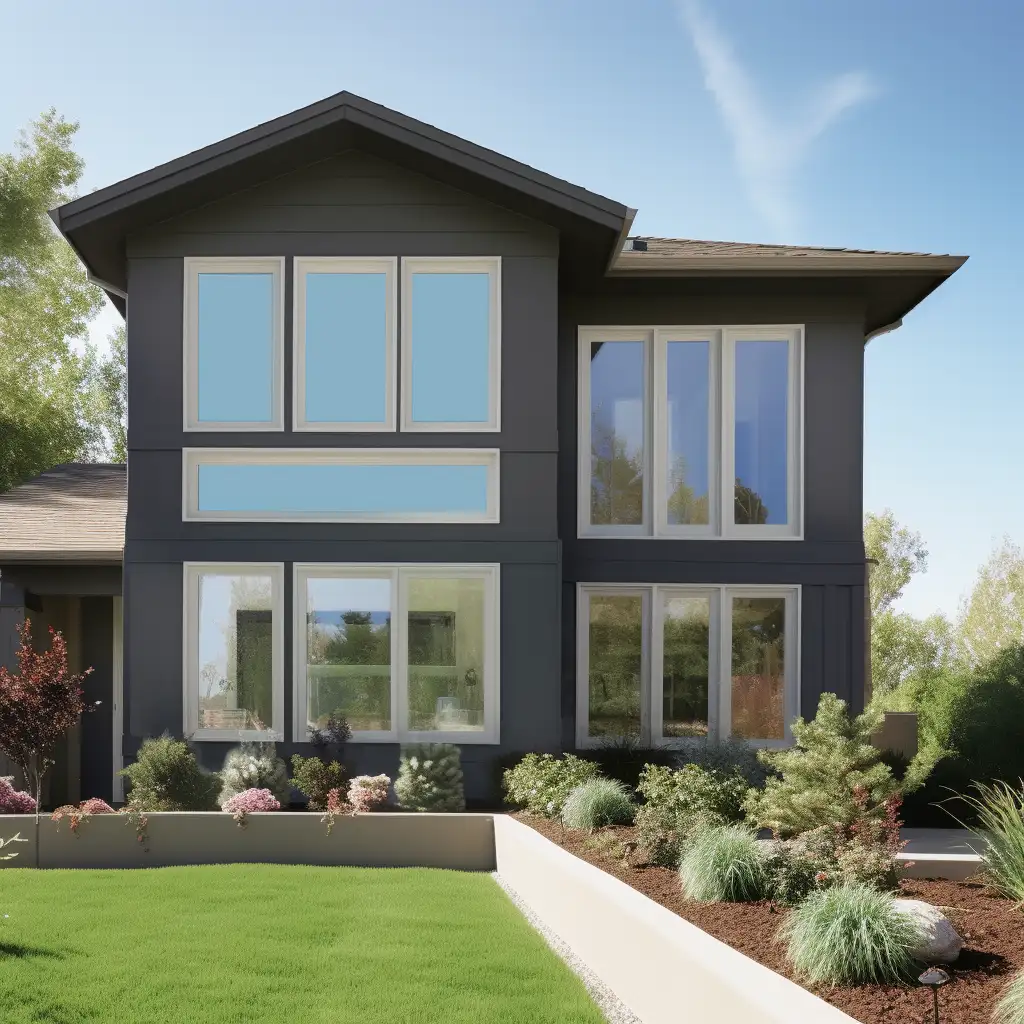Residential Window Tint: Block Harmful Rays Without Giving Up Natural Light
Wiki Article
How Residential Window Tinting Boosts Your Home's Energy Efficiency
Residential home window tinting provides a compelling service for home owners seeking to enhance power efficiency within their home. By using specialized movies to home windows, it properly decreases warm transfer, thereby maintaining indoor temperature levels and reducing the need for too much heating or cooling. This not just curtails power usage however also gives an extra comfortable environment by mitigating glare. Nonetheless, understanding the subtleties of just how tinting works and choosing the suitable type for your home can be critical. Oddly, what elements should one think about prior to making this financial investment?Understanding Window Tinting
Recognizing home window tinting is essential for house owners seeking to boost both convenience and power effectiveness in their home. Residential Window Tint. Window tinting includes the application of a thin movie to the interior or exterior surface area of glass home windows. This movie can significantly regulate the quantity of sunlight and warm that enters a home, therefore affecting interior environment problemsThere are different types of window tinting films available, each with distinct buildings. The effectiveness of window tinting is usually determined by its Visible Light Transmission (VLT) percentage, which shows how much light can pass through the movie.
Benefits of Power Performance
Home window tinting not only boosts appearances but also plays a considerable function in improving energy effectiveness within household rooms. By lowering heat transfer through windows, colored movies develop an extra secure indoor climate, which can bring about considerable decreases in energy intake for cooling and heating. This power performance converts into lower energy expenses, giving homeowners with substantial long-term savings.
Additionally, home window tinting improves the comfort of living spaces. By minimizing glare and blocking unsafe UV rays, colored home windows create an even more pleasant environment, which can cause enhanced well-being for residents. The defense versus UV rays likewise assists maintain furniture and flooring from fading, adding to the long life of home things.
Exactly How Tinting Works
Tinting movies run with a combination of innovative materials and innovations made to manage the quantity of solar power going into a home. Mostly composed of polyester, these movies typically include ceramic or metal fragments that reflect and soak up warmth. This twin capability allows them to considerably decrease the penetration of ultraviolet (UV) rays and infrared radiation while allowing noticeable light to travel through.The performance of window tinting is measured by its solar heat gain coefficient (SHGC), which indicates just how much solar energy is transmitted with the window. Lower SHGC worths are better as they represent better warmth rejection. Additionally, go right here home window tints can feature a range of shades, enabling property owners to personalize their visual preferences while enhancing energy effectiveness.
In addition, these films act as an obstacle, avoiding warmth loss during cooler months by mirroring indoor warmth back into the space. This thermal insulation impact complements the cooling advantages gotten during warmer months, adding to a well balanced interior climate year-round. By managing solar power properly, household window tinting not only improves convenience yet also plays a vital function in lowering power consumption and lowering energy bills.
Picking the Right Color

There are various kinds of home window films offered, including colored, metalized, and ceramic. Dyed movies are economical yet might have restricted toughness. Metalized films provide better warmth denial yet can disrupt digital signals. Ceramic movies give excellent warmth control without endangering exposure and are very long lasting, making them a preferred selection.
Noticeable light transmission (VLT) is another essential aspect, as it indicates the amount of natural light that can travel through the tinted glass. Home owners ought to pick a color with a VLT that complements their illumination preferences while still offering appropriate glare reduction.
Additionally, analyzing the solar warmth gain coefficient (SHGC) can aid figure out just how well a tint can block warm from sunshine. A reduced SHGC indicates better warm control, ultimately improving power effectiveness.
Installation and Maintenance Tips
Appropriate setup and upkeep are essential elements in maximizing the advantages of household window tinting. To accomplish ideal results, it is suggested to hire a certified expert for installation. This ensures that the color is applied correctly, avoiding air bubbles, wrinkles, or misalignment that might jeopardize efficiency. Specialists likewise use specialized tools and techniques, which can improve this contact form the resilience and performance of the color.Adhering to installation, upkeep is vital to prolong the life of the window movie. It is suggested to wait a minimum of thirty days before cleaning the colored windows to allow the adhesive to cure fully. When cleansing, use a soft towel and a mild, ammonia-free cleaner to avoid harming the movie. Avoid unpleasant materials that could scrape the surface area.
Dealing with these issues promptly can prevent more damages and keep power effectiveness. By adhering to these installment and maintenance suggestions, property owners can This Site guarantee their window tinting proceeds to supply significant power cost savings and convenience for years to come.
Conclusion
In conclusion, residential home window tinting offers as an effective solution for boosting power efficiency within homes. By reducing warm transfer and obstructing harmful UV rays, home window films contribute to decrease energy usage and boosted indoor comfort.Home window tinting involves the application of a slim movie to the inside or outside surface area of glass windows. By decreasing warmth transfer with home windows, tinted movies develop an extra steady indoor environment, which can lead to significant reductions in energy usage for home heating and cooling.The effectiveness of home window tinting is determined by its solar warm gain coefficient (SHGC), which suggests exactly how much solar energy is transmitted through the window. By managing solar energy effectively, property home window tinting not just improves convenience yet additionally plays an essential duty in reducing power intake and decreasing energy bills.
By decreasing heat transfer and obstructing hazardous UV rays, window movies add to reduce energy consumption and boosted indoor comfort.
Report this wiki page